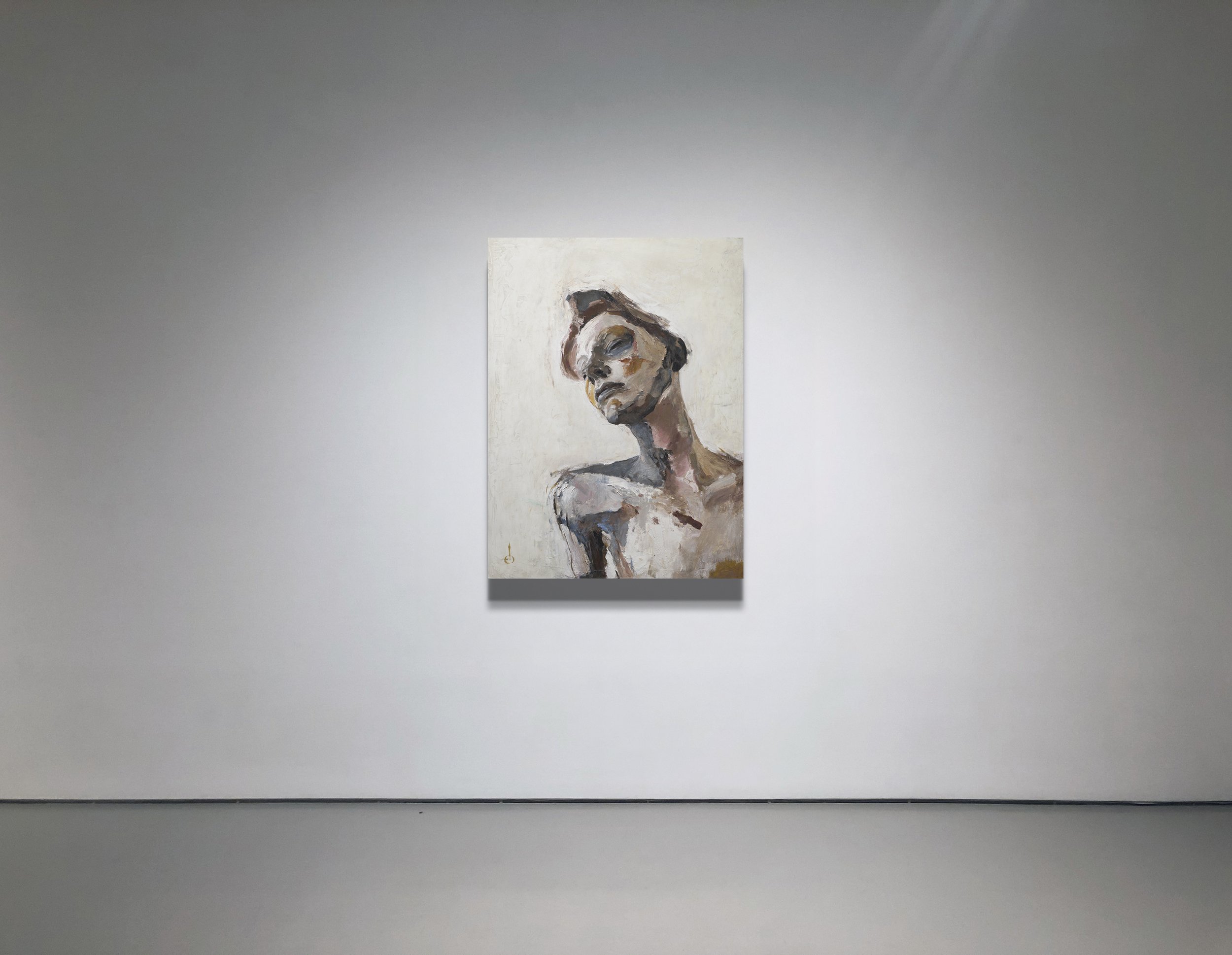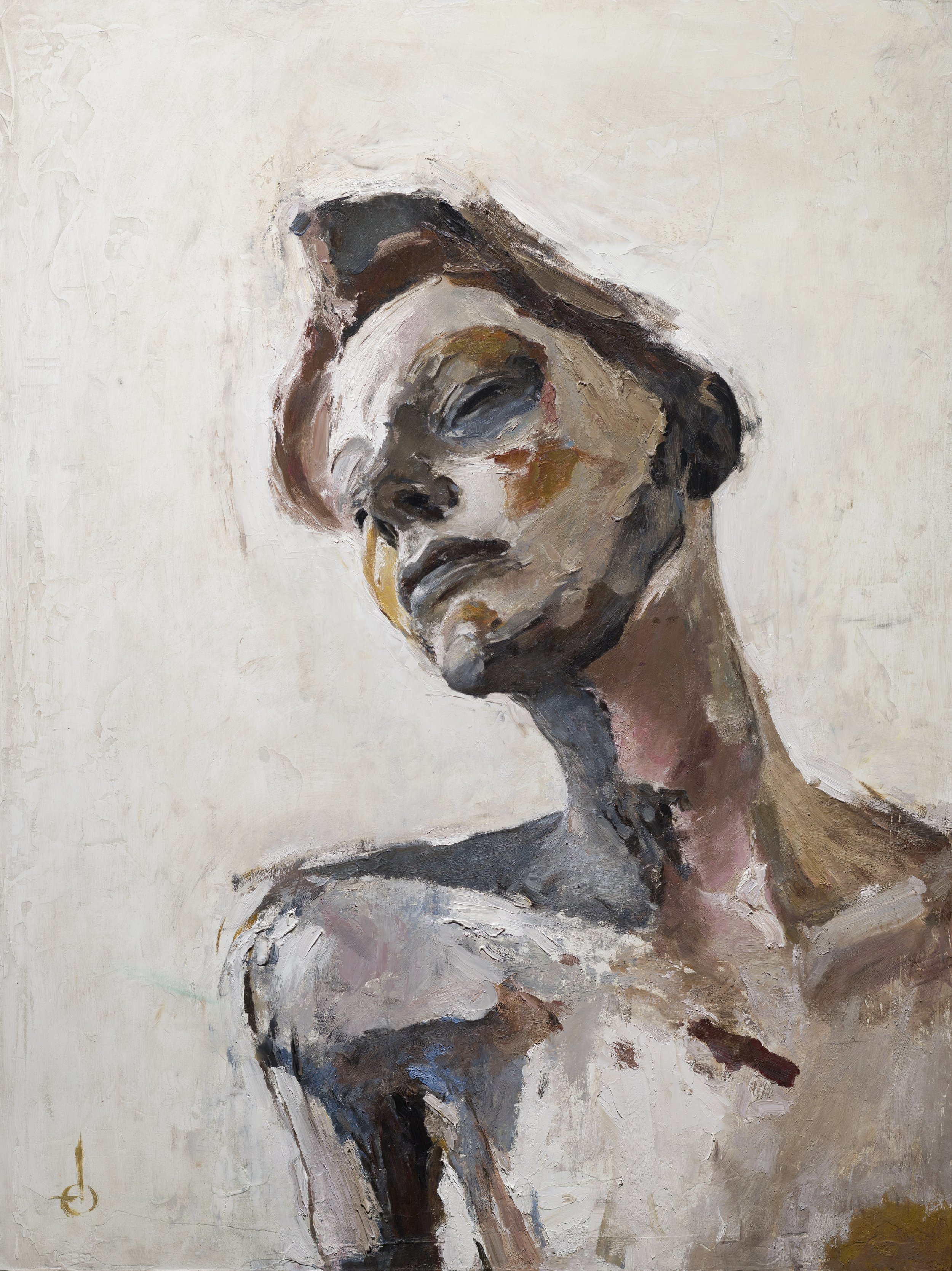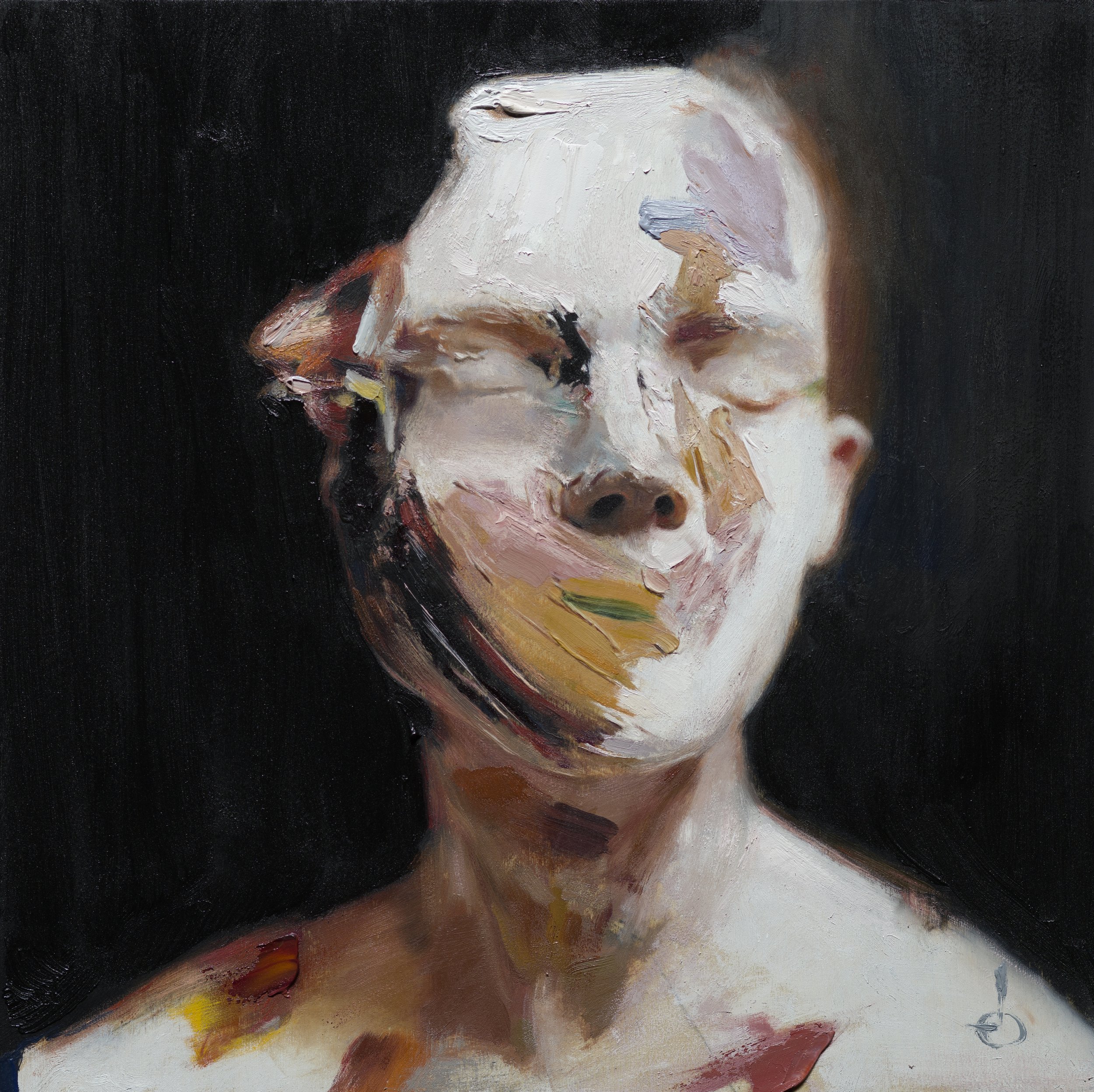Recent Work - An ongoing series of expressions
Baugh’s most recent body of work marks a powerful shift into expressionism and stands as his first official series under his full name, E.C. Baugh. Departing from traditional realism, these paintings embrace gesture, intuition, and emotional excavation. The figure dissolves and reforms, no longer rendered with anatomical precision, but shaped by energy, memory, and mood. Baugh’s palette draws from what he calls “ancient colors”, earth tones, mineral reds, deep blacks, and ochres, evoking ritual, ancestry, and the elemental nature of being. Natural textures, layered pigment, and raw brushwork define this new visual language, which seeks not to depict how people look, but how they feel. These works function as emotional landscapes, excavations of the human spirit, and mark a definitive evolution in Baugh’s practice: one that embraces vulnerability, impermanence, and the primal rhythms that connect us all.

“Figure II” Oil, ash and charcoal on linen - 48x72”
“Figure II” is a large-scale work that exemplifies E.C. Baugh’s evolving expressionist practice, in which the figure becomes a vessel for emotional and psychological resonance rather than representational clarity. Utilizing a mixture of oil, ash, and charcoal, Baugh introduces a material complexity that echoes the layered interiority of the subject itself. The composition presents a solitary figure rendered through fractured anatomy, gestural mark-making, and an elemental palette dominated by muted whites, iron-rich reds, ochres, and carbon blacks. The raw application of impasto, combined with areas of near-erasure and abrasion, invokes a sense of excavation, of revealing rather than constructing form.
Positioned within a vertical format, the figure’s upward-tilted head and closed eyes evoke both vulnerability and transcendence, anchoring the work in an introspective and almost devotional register. The use of ash and charcoal lends both physical depth and conceptual weight, symbolizing impermanence, memory, and the residue of experience. “Figure II” reflects Baugh’s continued departure from the conventions of realism, positioning the body not as an object to be seen, but as a surface upon which unseen emotional and ancestral histories are inscribed.


“Figure I” 40x30” Oil, ash and charcoal on panel
The figure functions less as a subject of representation and more as a conduit for emotional and psychological inquiry. Executed with gestural brushwork and thick impasto, the painting incorporates oil paint, ash, and charcoal, materials that introduce both physical and symbolic weight. The figure’s form is fragmented and reassembled through layered textures and a palette of desaturated earth tones, bruised blues, and muted reds. Stripped of narrative context, the figure exists in a liminal space, an emotional landscape shaped by material density and painterly immediacy. This piece reflects Baugh’s ongoing interest in the intersection of corporeality and inner life, marking a critical point in his departure from traditional realism toward an embodied, affective abstraction.


In “Anyone, Someone, No One”, E.C. Baugh distills the human figure to its most elemental and psychological form. Painted on a small scale, the work conveys an intimate intensity, merging abstracted facial features with expressive mark-making and a restrained, visceral palette. The figure’s eyes are closed, yet the surface is alive with tactile energy, swaths of oil pushed and dragged across the face in gestures that obscure more than they reveal.
The title evokes a meditation on identity and perception, how we are seen, how we see ourselves, and how we disappear into the collective. Is this a portrait of someone in particular, or a universal stand-in for the emotional interiority we all share? The ambiguity is central to the work’s power. With “Anyone, Someone, No One”, Baugh continues his exploration of the figure not as fixed likeness, but as a site of memory, emotion, and existential presence.
“Anyone, Someone, No One” 12x 12” Oil and wax on wooden panel

Baugh’s current practice can be understood as both a continuation and a deconstruction of his earlier realism. Where his past work sought to preserve the visible, his current work seeks to reveal the invisible. The canvas becomes not a window, but a mirror; one that reflects the primal, intuitive, and often hidden aspects of the human condition.


